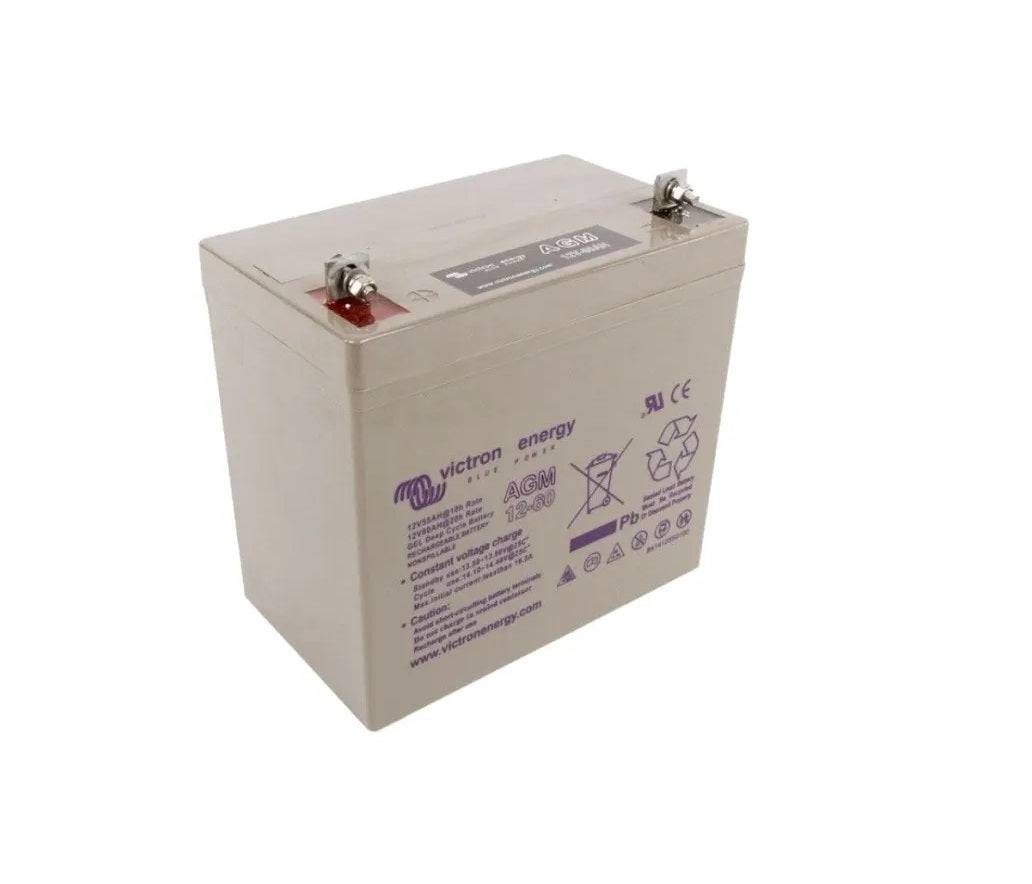
Victron Energy AGM 12V 60Ah Deep Cycle Battery
Choose options
Product Details
Victron Energy 12v 60ah AGM leisure battery BAT412550084
The AGM range has very low internalresistance making them particularly suitable for high currentdischarge applications such as for inverters, thrusters and winches.
VRLA AGM: design life 7-10 years
Features
VRLA technology
VRLA stands for Valve Regulated LeadAcid, which means that the batteries are sealed. Gas will escapethrough the safety valves only in case of overcharging or cellfailure.
VRLA batteries are maintenance free forlife.
Sealed (VRLA) AGM Batteries
AGM stands for Absorbent Glass Mat. Inthese batteries the electrolyte is absorbed into a glass-fibre matbetween the plates by capillary action. As explained in our book‘Energy Unlimited’, AGM batteries are more suitable forshort-time delivery of high currents than gel batteries.
Low Self-Discharge
Because of the use of lead calciumgrids and high purity materials, Victron VRLA batteries can be storedduring long periods of time without recharge. The rate ofself-discharge is less than 2% per month at 20°C. The self-dischargedoubles for every increase in temperature by 10°C.
Victron VRLA batteries can therefore bestored for up to a year without recharging, if kept under coolconditions.
Exceptional Deep Discharge Recovery
Victron VRLA batteries have exceptionaldischarge recovery, even after deep or prolonged discharge.
Nevertheless repeatedly deep andprolonged discharge has a very negative effect on the service life ofall lead acid batteries, Victron batteries are no exception.
Battery Discharging Characteristics
The rated capacity of Victron AGM andGel Deep Cycle batteries refers to 20 hour discharge, in other words:a discharge current of 0,05 C. The rated capacity of Victron TubularPlate Long Life batteries refers to 10 hours discharge. The effectivecapacity decreases with increasing discharge current (see table 1).Please note that the capacity reduction will be even faster in caseof a constant power load, such as an inverter.
We aim to pack and ship all of our our orders on the same working day.
Some of our large kits and systems can take longer
If goods are not available we will try to contact you as soon as possible to advise availability or an alternative part.
Please note we do not ship orders on Saturdays, Sundays or Bank Holidays
If you would like to order an item to be delivered on Saturday please contact us for shipping costs.
FREE SHIPPING OPTIONS
Orders over £75 can be sent FREE using Royal Mails 48hr Tracked service (2-3 working days).
UK Shipping Fees
Royal Mail 48hr Tracked service at £4.50 per order
Royal Mail 24 Tracked service is charged at £6.50
DPD next working day service is charged at £9.95
All orders needing next working day service with DPD will need to be ordered before 10am for us to book, process and pack this service with DPD. Any orders placed after 10am might be sent the next working day if we can not get them booked and packed in time but if urgent please contact us as we will always try our best to help.
Please note that some UK adresses including the Highlands and Northern Ireland will usually be a 2 Day Service.
All The above delivery information is for UK mainland deliveries only.
